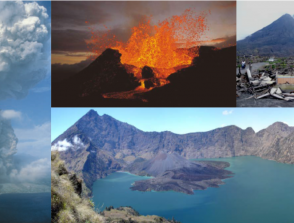A reconstruction of terrestrial volcanism over the last 2500 years using sulfur isotopes in ice-cores
09/07/2015
IPGP - Îlot Cuvier
13:30
Séminaires Systèmes Volcaniques
Salle 310
Elsa Gautier
Laboratoire de Glaciologie et Géophysique de l'Environnement - UJF Grenoble
Ice cores provide an opportunity to reconstruct a history of Earth’s volcanic activity. Many attempts have been made in the past to build a robust volcanic climate forcing model based on the ice records, but the robustness of this model depends on the statistical significance of usually a single record and on discriminating between large distant eruptions and closer, smaller eruptions. We used ice cores drilled at Dome C (Antarctica) to measure first, the statistical weight of a single ice core record and second, to measure the non-zero ?33S of ice-core sulfate as a proxy for stratospheric volcanic eruptions. SO2 emitted by these events can be mass-independently fractionated (?33S?0) during photolysis reactions in the stratosphere [1], [2], [3], [4]). The signal, recorded in aerosol sulfate, is preserved in ice cores. The sulfur anomaly allows identification of eruptions very likely to be stratospheric, with potential climatic impact, regardless to the ice core location, the age or the magnitude of the recorded event. In 2010-2011, five 100m-long ice cores from Dome C, Antarctica, separated by 1m, were collected to reconstruct the history of volcanism over the last 2500 years. Assumed volcanic events were identified through sulfate concentration measurements in the field, and located on the cores. We used an algorithm for the peak detection, and 51 potential volcanic events were identified. Based on this detection, a statistical evaluation of the occurrence of these 51 events in each ice core was conducted and allowed measuring the representativeness of a single ice core to reveal a history of volcanism. Following this statistical work, volcanic sulfate contained in snow and ice have been isolated, decontaminated, melted, concentrated and extracted using ion exchange methods. Each presumed volcanic event has been subdivided in 5 fractions at least, in order to differentiate the background isotopic signal from the sulfate peak. The peak itself has been divided into three portions. The results show that ?33S and ?36S are anti-correlated, and allow to discriminate stratospheric and tropospheric events, with the former having isotopic systematics that vary first with a positive ?33S at the beginning of deposition and with a negative ?33S at the end of the volcanic deposition. Such unique feature should allow us to reconstruct a robust volcanic forcing signal, independent of the size of the event record in ice.




